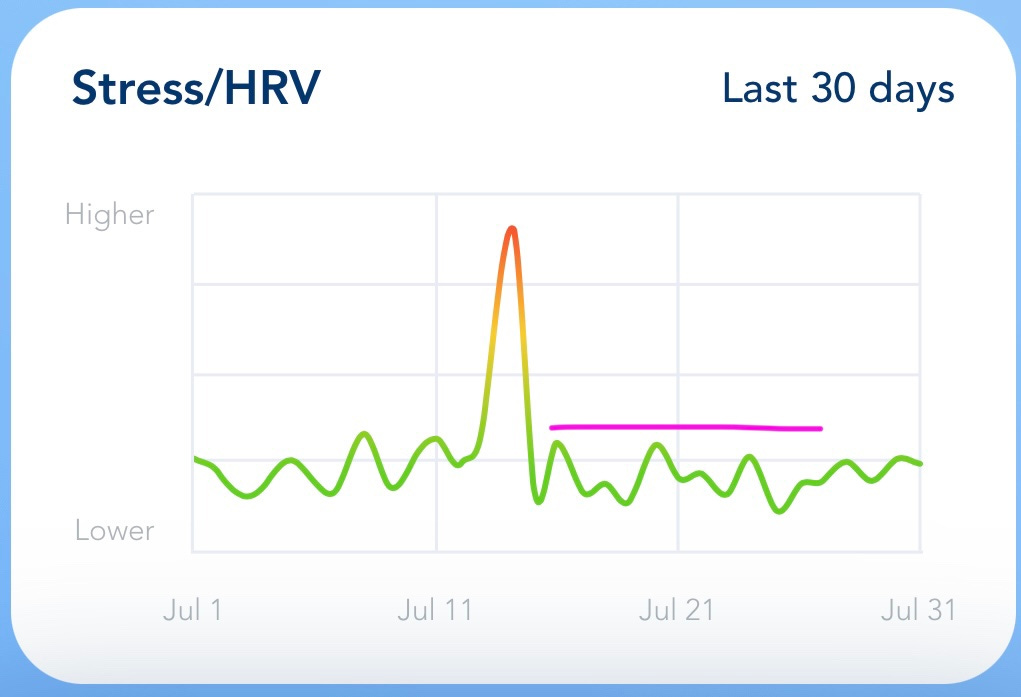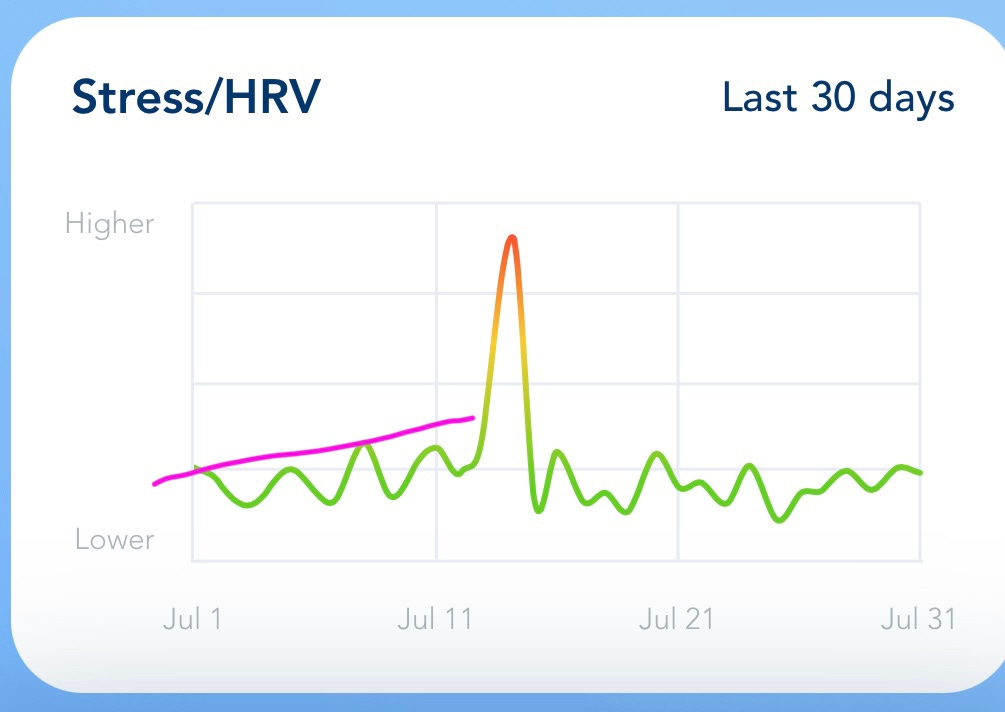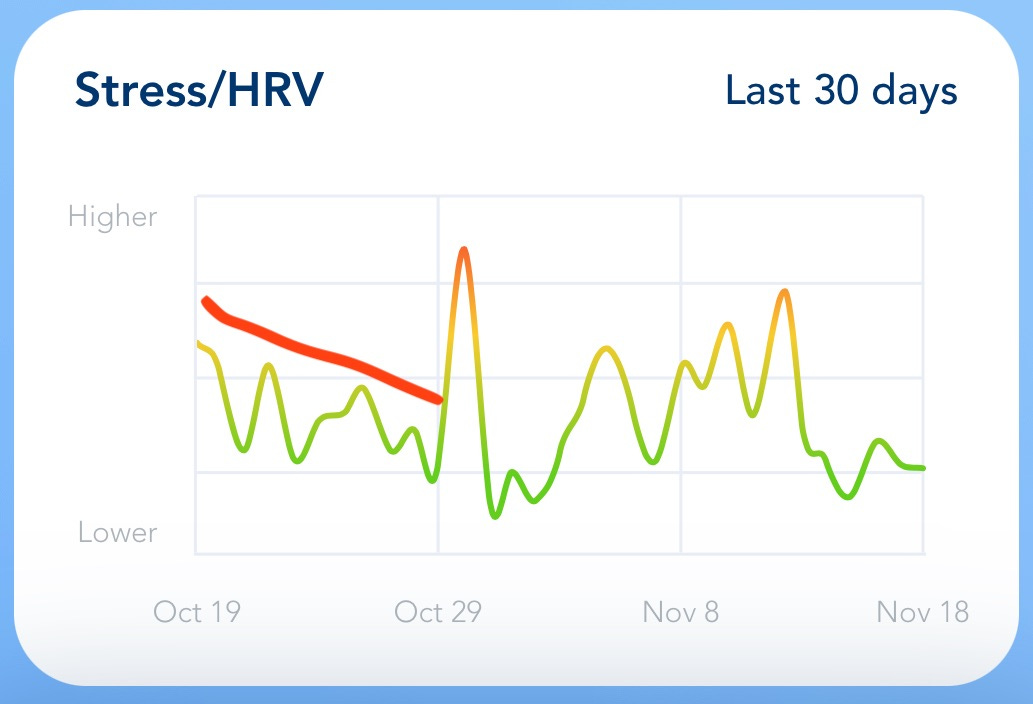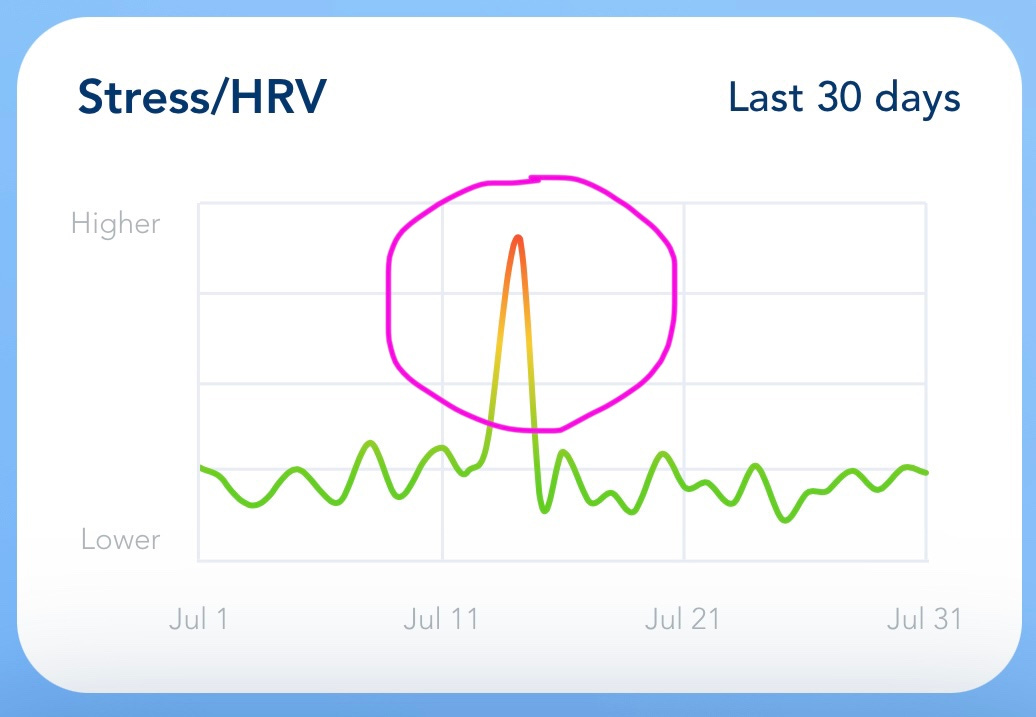According to the American Heart Association "Stress may lead to high blood pressure, .... heart attack and stroke" [1]. Sounds pretty scary, right? But what does Heart Rate Variability (HRV) have to do with it?
What if there was a way to objectively monitor your daily stress and get a warning if it approaches a critical level which may negatively impact your health? In fact medical scientists discovered this method back in the 60s while preparing astronauts for a space program and it has been widely used since then by cardiologists. This method is called HRV.
This method gained a major following in recent years because one can measure their HRV with a regular smartphone’s camera at home. It takes just one minute and most specialised apps do it for free. Yet, there is lots of confusion around what exactly HRV measurements can tell about our health, what they can’t and what is the proper protocol for taking these readings. This post answers these questions.
What is HRV?
HRV shows how the time between consecutive heartbeats changes within a period of time. If a user is stressed out, the time between heartbeats stays fairly constant. If a user is relaxed, the time between heartbeats shows higher variability. These changes in variability are quite small and therefore humans need sensors to identify them. These variations can be detected by ECG devices or by sensors of your smartphone’s camera or smartwatches like Apple Watch.
Heart rate and HRV are regulated by the parasympathetic part of the autonomic nervous system. Parasympathetic nervous system (PNS) controls the so-called ‘rest and digest’ state of the body. On the other hand, the sympathetic nervous system (SNS) is responsible for the ‘fight or flight’ behaviour which causes stress to our body. This is why measuring HRV is an effective way to understand how our body is doing while trying to maintain a state of balance in response to different life stresses.
What is Total Life Stress (TLS) and how is it linked to HRV?
Total Life Stress (TLS) is all of the stress someone experiences in their life: exercise, relationships, diet, sleep quality, lifestyle, environment, alcohol consumption, getting sick, etc. Heart rate, hormones, blood pressure, glucose etc, react to life stresses and our autonomic nervous system tries to keep our internal systems in balance.
Scientists call the state of balance among all the body systems needed for the body to survive and function correctly homeostasis [2]. Multi year research by different teams shows that HRV is a practical, cost effective, and non-invasive way to measure the activity of the autonomic nervous system as related to stress.
What does it mean in practical terms? It means, for example, that if your HRV drops big time from one day to another, you will NOT know for sure what led to this drop. It could be a really hard workout or too many drinks the night before. For HRV to be useful you have to isolate a particular reading down to a single most important factor. For this to happen you need to follow a special measurement protocol. We will cover the most common examples below.
Are HRV and Heart Rate the same?
HRV is different from heart rate. Two people may have the same heart rate when measured over a period of time, for example 60 beats-per-minute (BPMs). Yet one of them may be very relaxed with high HRV and the other one totally stressed out with low HRV.
Usually mobile apps invert HRV data to make readings more intuitive: lower stress (which corresponds to higher HRV) is linked to a higher state of relaxation. And vice versa: higher stress translates into lower HRV values.
What is the link between HRV and age
This graph [4] shows that HRV gets lower with age. Intuitively this makes total sense: as we get older, it requires more effort from our body to keep all life processes in balance. This example illustrates one more important message. Making any conclusions about someone's health or stress level based on one off absolute HRV reading is totally meaningless. If you are serious about HRV, you need to determine your baseline and then observe how consecutive measurements deviate from this baseline.
What are scientifically proven HRV measurement protocols?
For consistent stress measurement results for the daily graph a user needs to take HRV reading first thing in the morning: right after waking up, while seated on their bed [5]. Please note that to take an HRV reading on your Apple Watch you need to launch an Apple Breathe app. This is currently the only way to trigger an HRV measurement on Apple Watch at a specific time.
One more way to make sense of HRV is right before and right after a specific calming activity, i.e. breathing exercise or meditation. If you take two closely spaced HRV readings you exclude other factors and focus just on the most important one. Like a calming activity. This is a great way to see objectively if this particular activity produced an intended result.
Another proven routine for HRV measurement is continuous HRV monitoring. It is available in a few specialized wearables which are paired with sophisticated AI software from the same wearables manufactures. This software filters out useful signals from noisy data and makes sense from random HRV changes throughout the day. For example as of November 2023 this combination of continued HRV monitoring and analysis is not available for Apple Watch.
What HRV values from mobile apps can NOT tell us?
Some sophisticated medical grade equipment (usually a special version of an ECG machine) can provide deep interpretation of HRV data and split it into different indicators: i.e. different types of stress, energy level, illness risk etc. However a consumer device like a smartwatch or phone camera produces HRV data which is quite noisy and hence it is sufficient only for basic analysis. This data can NOT be used for deep analysis of stress factors.
The other thing to be aware of is that different people have different absolute HRV values. Two people may have similar absolute HRV values with one being stressed out and the other one fully relaxed. See example above with HRV differences by age.
Some apps go a long way to tell you about your stress, energy level and even health from just one heart rate measurement with the phone's camera. Don’t get fooled by these false offerings. Scientific research papers which we reference below show that this is not possible.
Hence while using mobile apps and HRV to study someone’s stress it makes sense to focus primarily on two things: daily or weekly trends and stress difference between two closely spaced events, i.e. before a relaxation exercise and immediately after.
What are the most popular HRV use cases?
Review a graph which shows daily trends in stress/HRV changes. Use daily morning measurement protocol as explained above. Examples below show screenshots from our app BreathNow which present inverted HRV values. Higher values mean lower HRV and higher TLS. You can make the following conclusions based on the trends of the HRV graph:
Small variations in stress from day to day, no obvious trend observed. Most likely you properly control your stress. Congratulations!
The graph is trending up. Most likely your stress is building day to day. Try to increase quality sleep time, spend more time walking in nature, do more breathing exercises and meditations.
The graph is trending down. This is a great opportunity to increase your energy level to be more productive. Go for a moderate intensity exercise like brisk walking, jogging, cycling or swimming. Alternatively do more Energize breathing exercises.
The graph shows a sudden spike in stress level after a morning measurement while you exercise as usual and have not experienced any other obvious stressors (i.e. too much alcohol the night before). This may be an indication that your body is fighting some sort of acute illness, i.e. stomach or viral infection. Give yourself more opportunity to rest.
2. A 2nd protocol suggests isolating one primary impact factor and measuring its impact. This is a great way to check how a particular exercise helps you to calm down (breathing, meditation, slow walking) or energise you (aerobic exercise, Energise breathing, HIIT exercise, etc). Take an HRV measurement, perform an exercise, check HRV level again. This is a great way to check which particular exercise works best for you.
Summary
HRV is a very useful tool to evaluate Total Life Stress and make lifestyle adjustments based on analysing trends of daily morning measurements. It helps to monitor your overall health.
Use closely spaced HRV measurements to evaluate which relaxation or energizing activities work best for you.
Do not fall for false advertising offering deep stress/energy/health analysis based on one HRV measurement from a smartphone’s camera
References
Chronic stress can cause heart trouble, American Heart Association
How to interpret HRV to reduce stress and increase performance, www.trainingpeaks.com
Resting Heart Rate and Heart Rate Variability (HRV): What’s the Difference?
How you should measure you morning Heart Rate Variability, www.hrv4training,com









